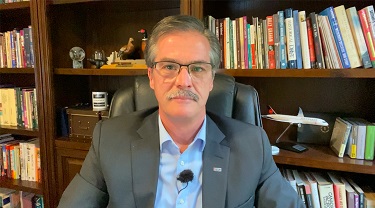The global pandemic is demanding a lot of the economy. First, there was the hit to activity. Then the massive, debt-financed stimulus. Add pedal-to-the-metal monetary policy. Ahead of us yet is the demand that demand itself recover fully. This is the focus of much effort and activity. But as the economy restarts, is it all about demand, or is there more?
Make no mistake, demand is crucial. A pandemic or any other similar shock to the economy can undermine confidence in a way that hobbles demand―sometimes momentarily, sometimes for years. Restoration of confidence back to normal levels is a key part of encouraging consumers and businesses back to the table.
A big help to demand this time around is that there was plenty of it stored up before COVID-19 hit. And more has been added during the pandemic: banks accounts have piled up as the employed get paid, but have far less to spend it on. It’s also quite possible that stimulus money is, for the moment, being socked away until things improve. It’s reassuring to know that when we are all ready to spend, there’ll be plenty of cash to fund it.
As good as this news is, it’s not enough. To satisfy demand, there needs to be supply. We got our first collective taste of this just days into this debacle: fearing the worst, consumers stocked up on essentials, drawing down supplies on store shelves and creating a run on what was left. Thankfully, after a brief episode industry was able to demonstrate that supply lines were intact, and we all calmed down.
We’ve had a second taste of this in the initial economic rebound. Lockdown gave us a better look at the imperfections in our homes. Reopening launched a flurry of renos and moves. Since then, there has been a run on building supplies that has sent prices of 2x4s and other wood products soaring. Other hot items have seen the same, pushing non-energy commodity prices up 8% in just a couple of months. Normally, we should be able to handle this, but production cutbacks have constrained supplies.
A third threat to supply is supply chains themselves. Dispersed supply chains are vulnerable to COVID-19 conditions in their various zones of operation. Lockdowns, either partial or full, can shut down entire operations. There will be vulnerability on this front until global infection rates diminish substantially.
Another more subtle evidence of supply putting the bite on growth is in business services. Need machinery from abroad? It’s likely going to take an international specialist to install it and get it operational. These specialists are balking at travel, interaction and quarantine restrictions. Canadian exporters are complaining that this is inhibiting their ability to produce and deliver. It’s the same for software and other cross-border services requiring human interactions. And it’s limiting our ability to recover.
It gets worse: future business investments, especially the substantial ones, aren’t likely going to happen digitally. It’s hard to part with tens, hundreds of millions or more in investment dollars sight unseen. Trust still requires in-person interactions, especially across countries, cultures, languages and a host of other differences. A certain number of these will be on hold until we can safely meet eye-to-eye.
We may be awhile getting to that point, but we can’t put it off forever. Like past pandemics, things will likely ramp up more quickly than expected. It’s usually the first few that venture out, do the deal, reap the rewards (all the while coming back safely) that starts the stampede back to normal. This is what we saw post-SARS, in spite of dire contrary predictions.
Demand is critical to the economy’s full restart. But supply also has to co-operate to make things work. Provisions of liquidity to businesses in COVID-limbo are aimed at getting the lights back on as soon as possible. Unfortunately, businesses can’t just switch on and off at will, especially in our highly integrated, specialized and just-in-time world. No doubt there will be a post-pandemic retooling of the business model to reduce the vulnerabilities inherent in our finely-tuned production system.
The bottom line?
Stop! isn’t something we do well in our fast-paced, high technology economy. Yet that’s what COVID-19 has demanded of us all, and the adjustment has, for the most part, been very painful. Recovery is now demanding a restart, and as demand responds, helping supply to keep pace will take a lot of effort. Stopping may have been hard, but a synchronized restart is proving to be no walk in the park either. What will help immeasurably is getting the pandemic under control.
This commentary is presented for informational purposes only. It’s not intended to be a comprehensive or detailed statement on any subject and no representations or warranties, express or implied, are made as to its accuracy, timeliness or completeness. Nothing in this commentary is intended to provide financial, legal, accounting or tax advice nor should it be relied upon. EDC nor the author is liable whatsoever for any loss or damage caused by, or resulting from, any use of or any inaccuracies, errors or omissions in the information provided.






